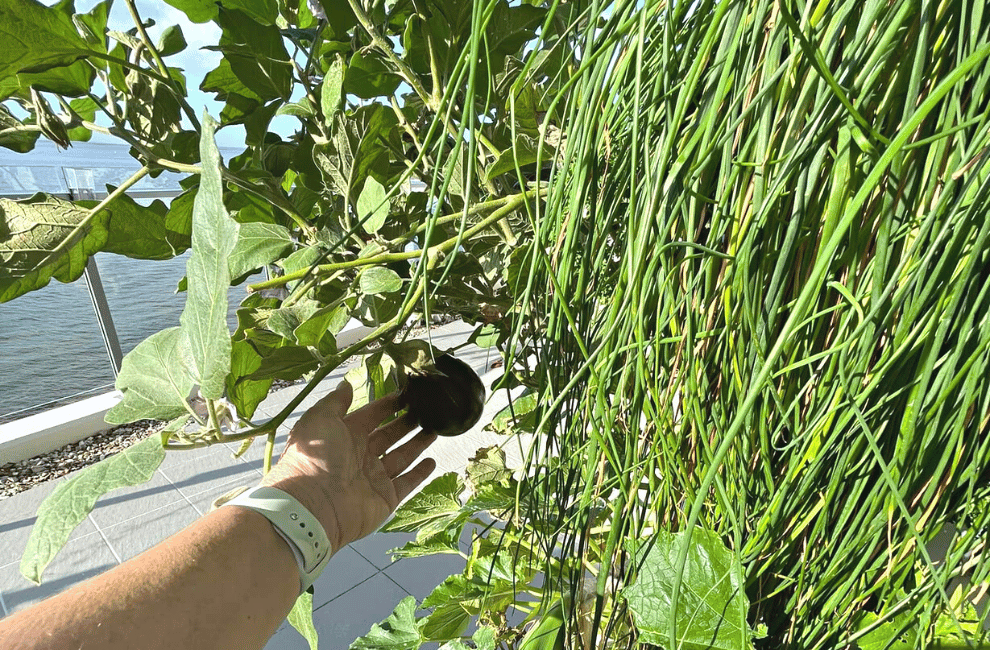
How To Grow Aeroponic Vegetables: A Comprehensive Guide

Aeroponic vegetable growing is a highly innovative and modern way of producing crops. It is a soil-less farming system that uses a misting technique to deliver a nutrient-rich solution to the plant roots. This method of growing vegetables has become increasingly popular because of its numerous advantages, such as increased crop yields, minimal water usage, and reduced soil-borne diseases. In this post, we will provide a comprehensive guide for growing aeroponic vegetables step by step.
What Are Aeroponic Vegetables?
Aeroponic vegetables are crops that are grown in a controlled environment using a soil-free system. The plants are suspended in air, and their roots are misted with a nutrient-rich solution, providing them with all the necessary nutrients to grow. This technology has the potential to revolutionize the agriculture industry by providing a sustainable solution to meet the growing demand for food while minimizing the environmental impact.
Benefits
One of the main advantages of growing aeroponic vegetables is increased crop yields. Because the plants are grown in a nutrient-rich mist, they are able to grow faster and produce more vegetables than traditional soil-based farming methods.
Another benefit of aeroponic vegetable growing is reduced water usage. Because the nutrient solution is misted directly onto the roots of the plants, there is typically 95% less water waste than traditional irrigation methods.
Finally, aeroponic vegetable growing is known to improve plant health. Because the plants are not exposed to soil-borne pathogens or pests, they are less likely to suffer from disease or pest infestations. Additionally, the nutrient-rich mist encourages healthy root growth and overall plant growth.
Risks
Here are some of the potential risks of aeroponic vegetables:
- Risk of power outages: Aeroponic systems require a constant supply of power to operate.
- Dependency on nutrient solutions: Aeroponic systems require a nutrient solution to feed the plants. Farmers need to ensure that the nutrient solution is properly balanced and adjusted to meet the plants' requirements.
- Water quality: If the water is contaminated or contains high levels of minerals, it can damage the system and impact plant growth.
Setting Up Your Aeroponic System For Your Vegetables
Before starting to grow aeroponic vegetables, you need to select an aeroponic system that suits your needs. There are several types of aeroponic systems, including low-pressure and high-pressure systems. A low-pressure system consists of a water pump that generates a low-pressure misting system. It is suitable for growing small plants, such as herbs and lettuce. A high-pressure system, on the other hand, consists of a high-pressure pump that generates a fine mist of nutrient-rich water. It is suitable for growing large plants, such as tomatoes, peppers, and cucumbers.
You then need a nutrient solution that will feed the plants. The nutrient solution should contain all the essential natural nutrients required by the plants, including nitrogen, phosphorus, potassium, calcium, magnesium, sulfur, and trace elements. You can purchase pre-made nutrient solutions or prepare your own.
Once you have prepared the nutrient solution, it's time to plant the vegetables. Use net cups or mesh pots to hold the plants in place. The cups or pots should be placed in the system, and the roots should be misted with the nutrient solution. Ensure that the roots are fully covered by the solution. It's essential to keep the plants upright until the roots have developed and the plants are established.
Selecting The Right Aeroponic Vegetables To Grow
Almost all vegetables can be grown aeroponically, but some are more suitable than others. Vegetables that grow well in aeroponic systems include lettuce, spinach, kale, basil, parsley, mint, tomatoes, peppers, and cucumbers. When selecting vegetables, consider the climate, growing conditions, and available space (take our growing quiz to find out more).
Maintaining Your Aeroponic Garden And Growth Of Your Vegetables
Once the plants have been planted, it's crucial to maintain the aeroponic system to ensure healthy plant growth. One of the most important aspects of maintaining the system is monitoring the nutrient solution's pH and EC (Electrical Conductivity) levels. You should test the nutrient solution regularly and adjust the pH and EC levels accordingly. Plants need different nutrients at different growth stages, so you should change the nutrient solution's composition according to the plant's growth stage. It's also important to ensure that the misting system is functioning correctly and that the plants are getting the required amount of light.
Monitoring and controlling the environment in which your aeroponic vegetables grow is essential. Temperature, humidity, and CO2 levels should be monitored and adjusted as needed. The ideal temperature range for most plants is between 18 and 24 degrees Celsius. The humidity level should be around 60%. CO2 is required for plant growth, and you should aim to maintain a level of around 1000 ppm.
Harvesting Your Aeroponic Vegetables
Once your vegetables have matured, it is time to harvest them. Depending on the type of vegetable, this may involve cutting the plant at the base or picking individual fruits or vegetables. Harvesting should be done carefully to avoid damaging the roots or other parts of the plant.
Bonus Tips When Growing Aeroponic Vegetables
In conclusion, growing aeroponic vegetables is a great way to produce healthy, nutrient-rich vegetables with high yields and minimal water usage. By following the steps outlined in this blog post and properly maintaining your aeroponic system, you can enjoy fresh vegetables all year round.
Learn More About Our Airgardens
One of the best ways to grow aeroponic vegetables is with a vertical garden like the Airgarden. The Airgarden allows you to grow 30 different plants at once, out of a possible 150 different options, and all in just 1 metre² of space. If you’d like to learn more about growing your own with the Airgarden, you can also contact our team.







